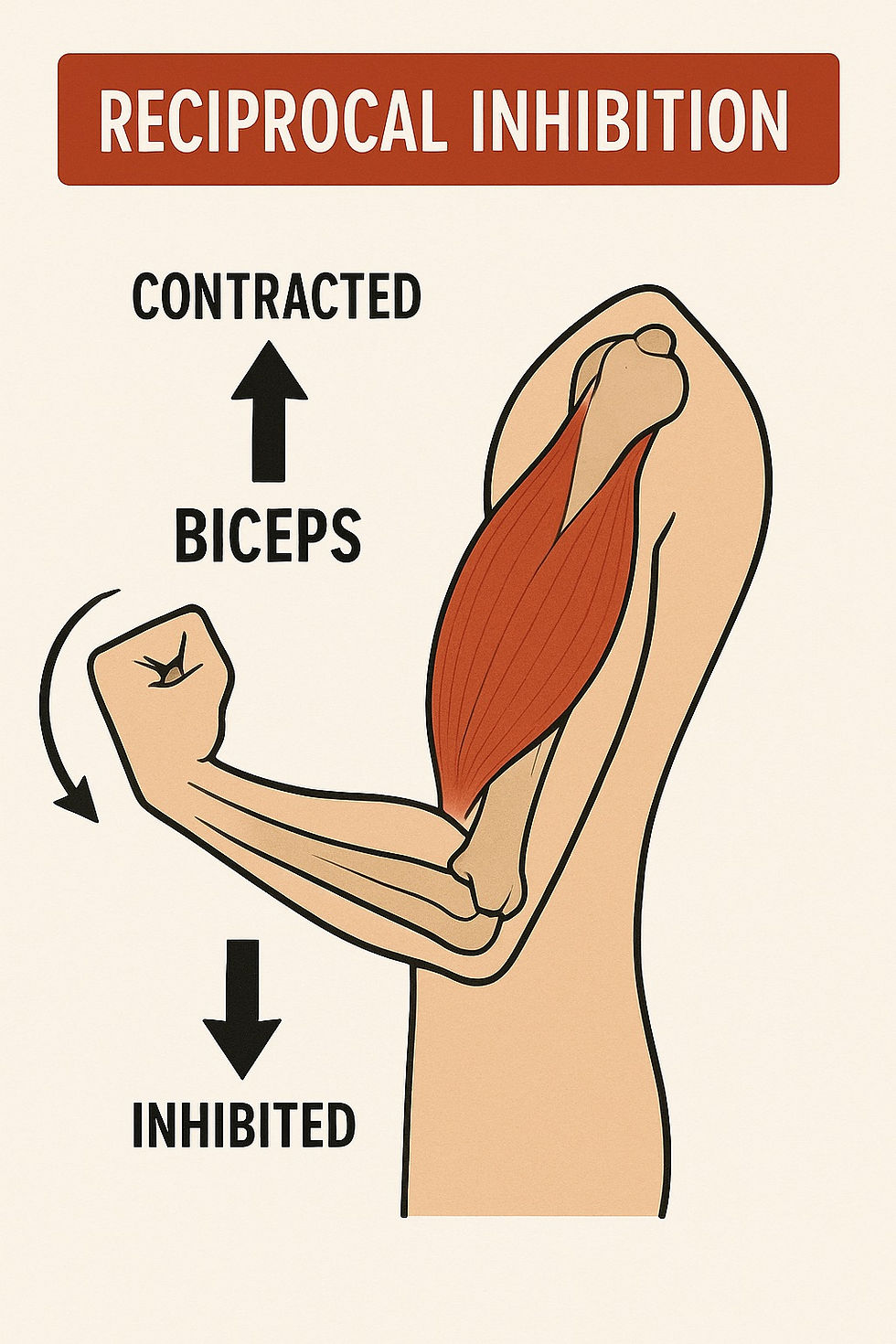The Law of Reciprocal Inhibition-How Turning Off One Muscle Activates It’s Opposite
- Jul 7
- 2 min read
Updated: Jul 13

The Law of Reciprocal Inhibition – How Turning Off One Muscle Activates Its Opposite
What Is It?
Reciprocal Inhibition is a reflex mechanism where:
When one muscle contracts, its direct antagonist is neurologically inhibited to allow smooth movement.
It’s an automatic spinal cord reflex, meaning it happens without conscious input.
Real-Life Example:
• When you contract your biceps to bend the elbow, your triceps are inhibited so they don’t resist the motion.
• When you extend the leg using the quads, the hamstrings are neurologically dialed down.
This is vital for fluid movement, but in martial arts, it becomes a powerful tool for control & dysfunction.
🥋 Kyusho & Tuite Application:
1. Disabling Muscle Groups via Reflex
Let’s say you want to lock someone’s arm:
• Press or strike LI10 or LU5 (motor points on biceps line)
• That can suppress the biceps, especially if you stretch the triceps during the lock
• Their ability to resist collapses because the triceps “win” neurologically
You didn’t overpower the biceps — you simply shut them down by activating their opposite.
2. Escape and Flow Strategies
In flow drills, this can be used to reverse an opponent’s structure:
• If they contract the pec or bicep to resist, activate their antagonist (posterior deltoid, triceps, rhomboids)
• Or use pressure on antagonist meridian points (like LI vs SI)
You’re not just “reversing energy” — you’re triggering reciprocal reflexes built into the spinal cord.
Drill Idea:
Try this:
• Have a partner tense a muscle (like biceps during a grab)
• Lightly stimulate the triceps insertion point with pressure (e.g., TW11)
• Have them try to resist again — the biceps will often falter without pain
Understand the Science. Master the Art!🐼




Comments